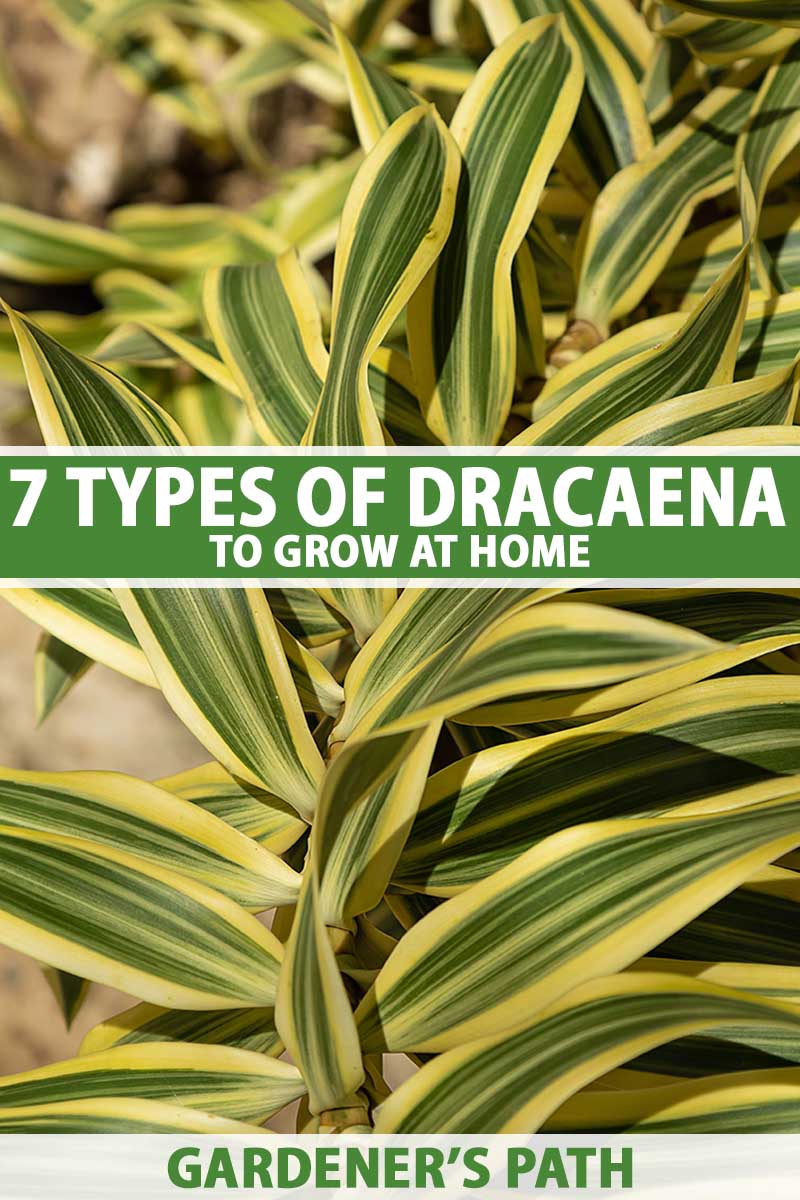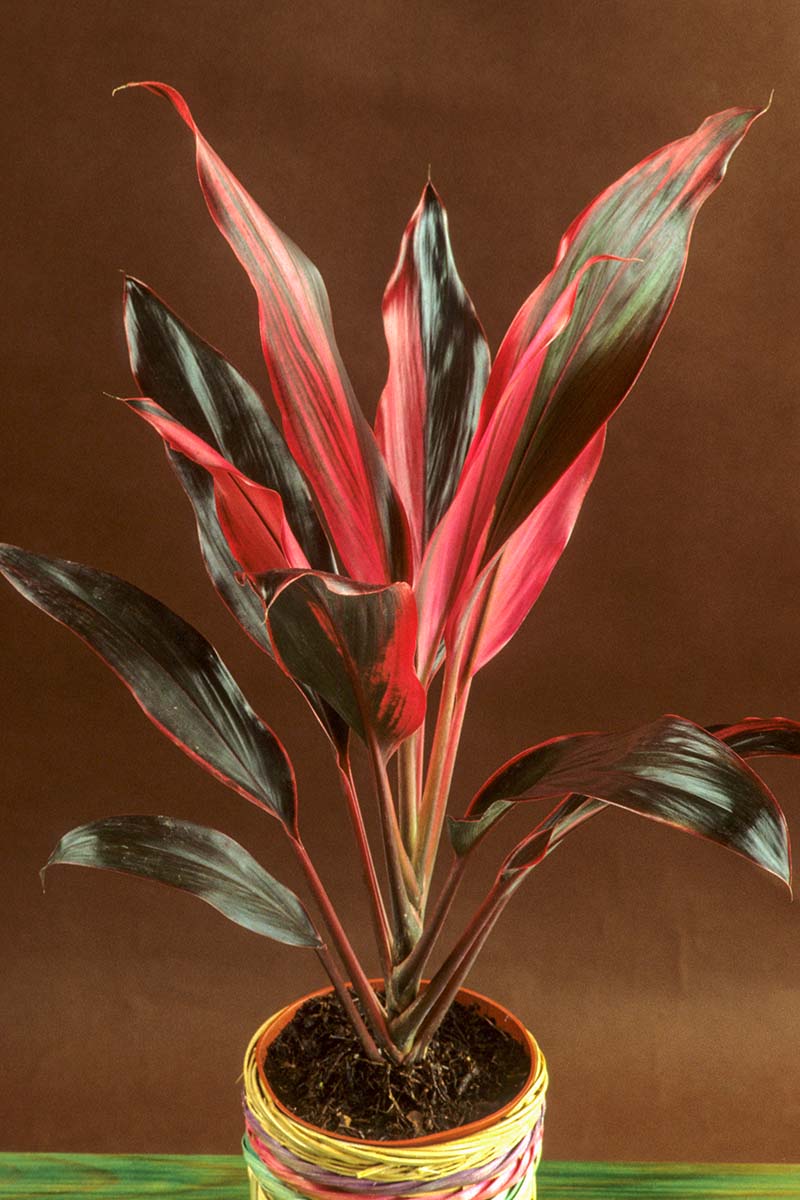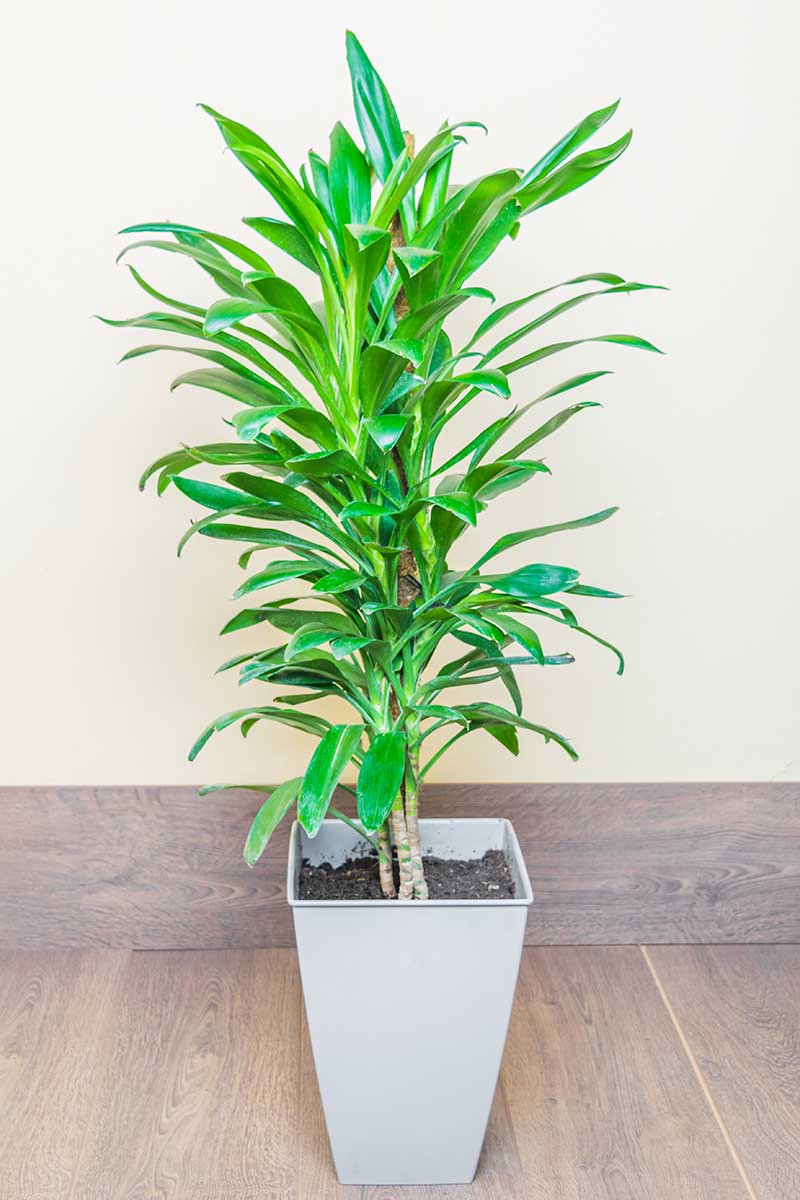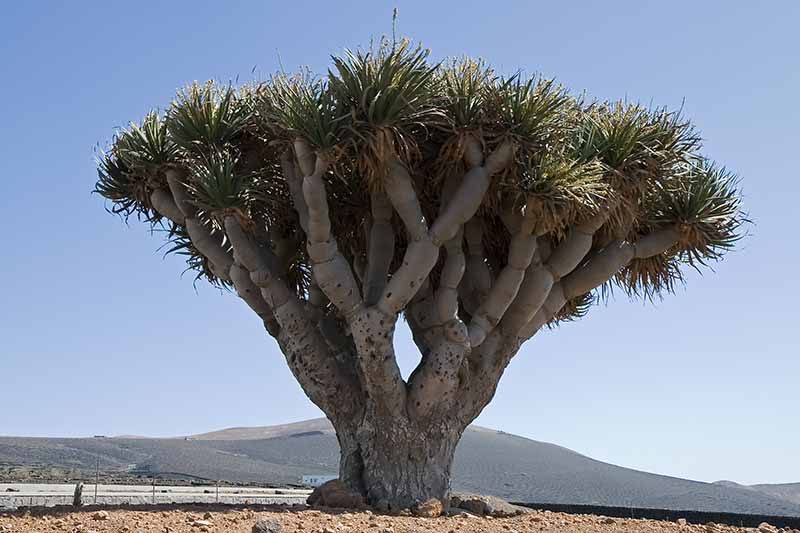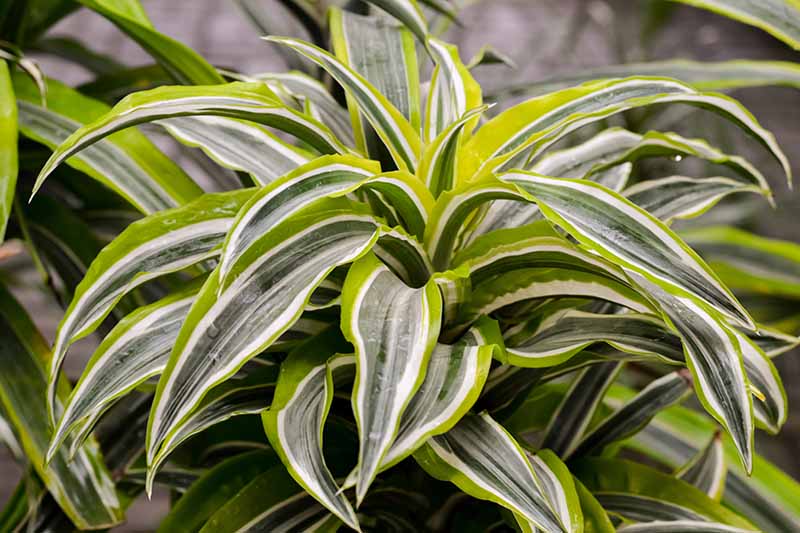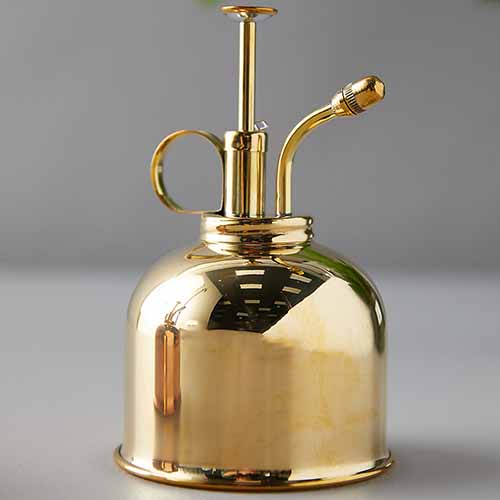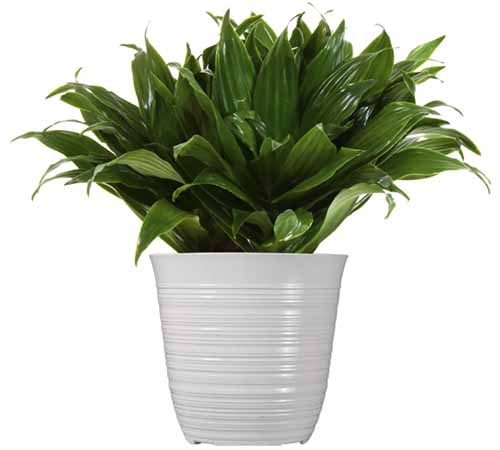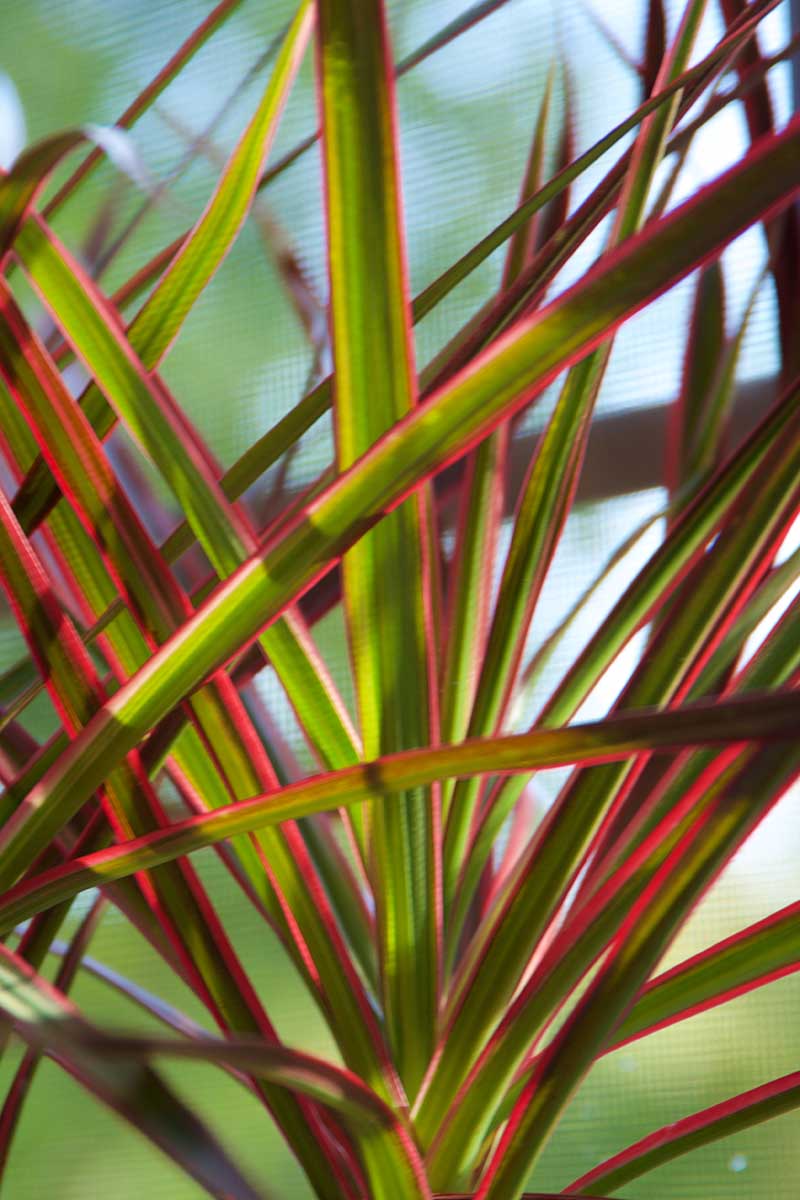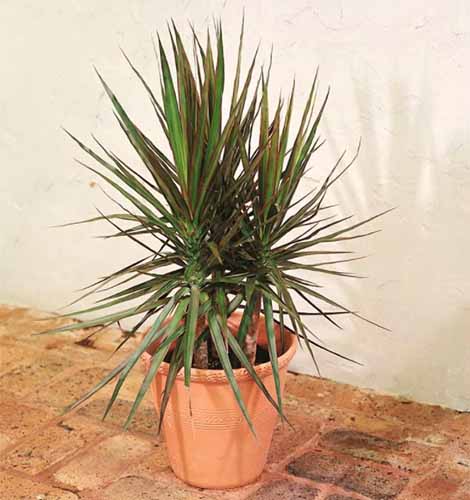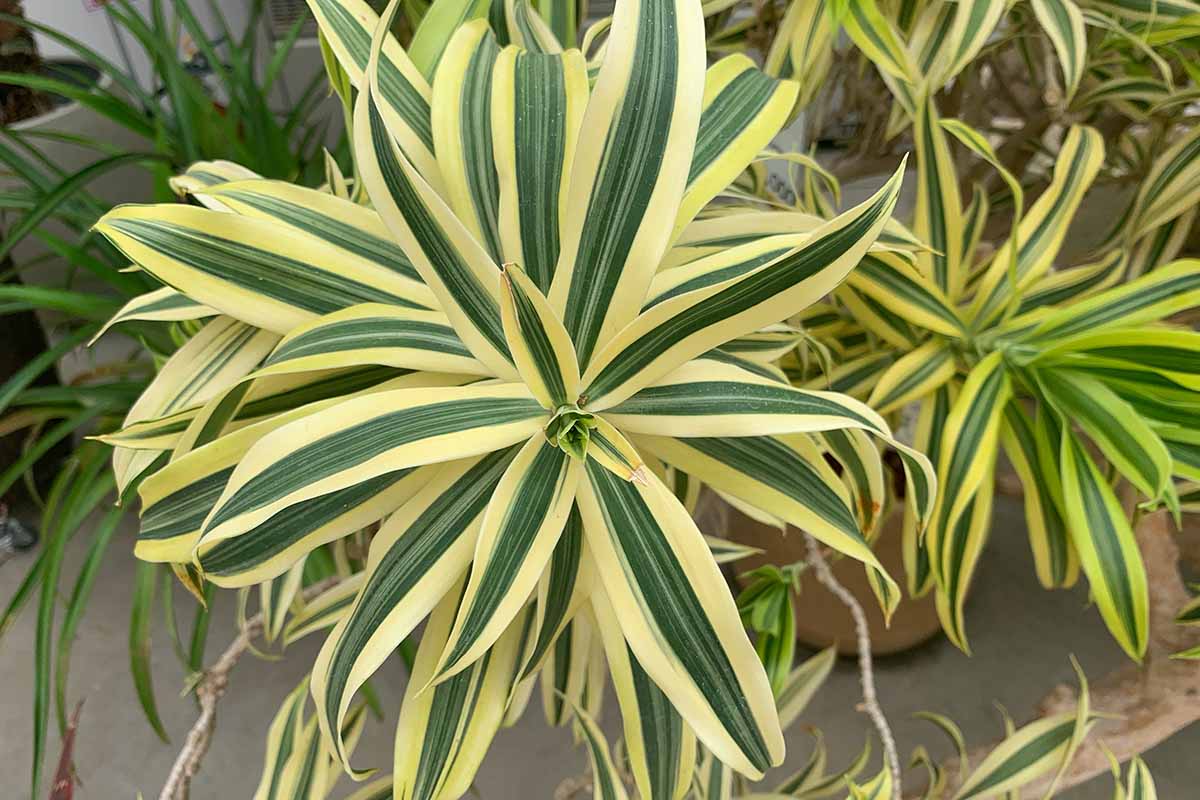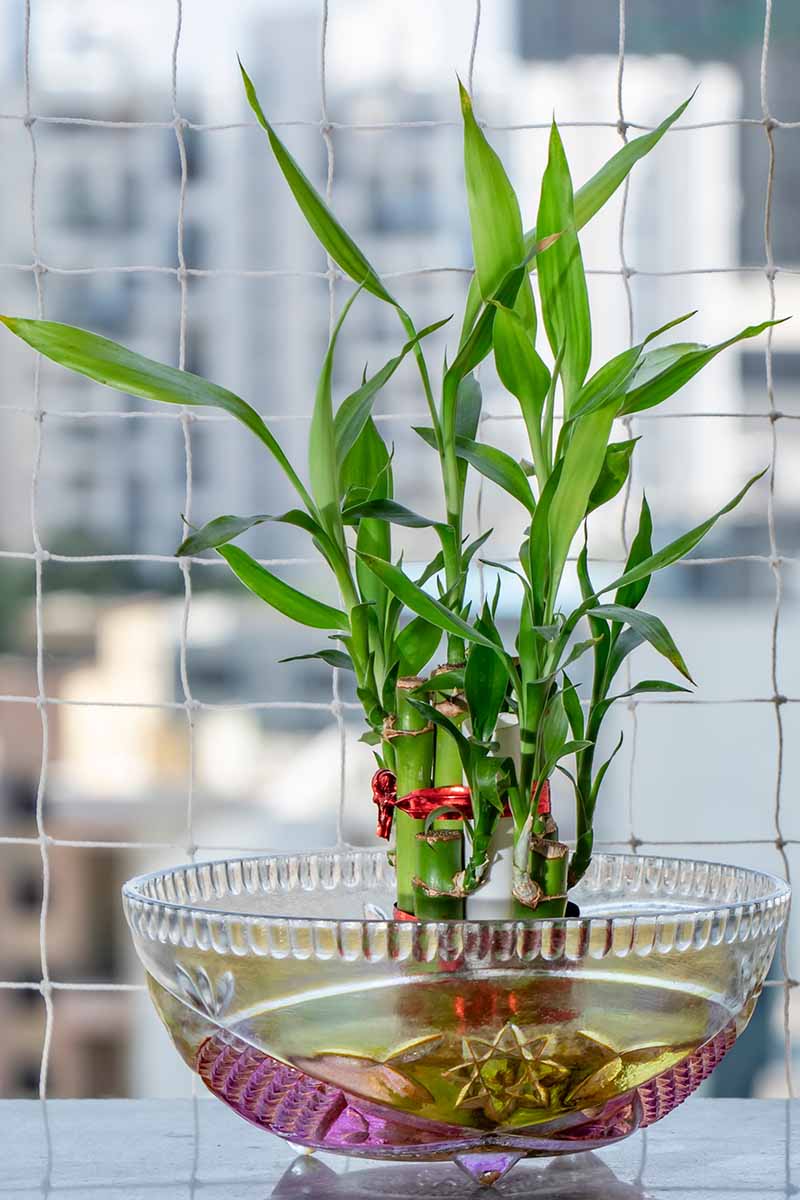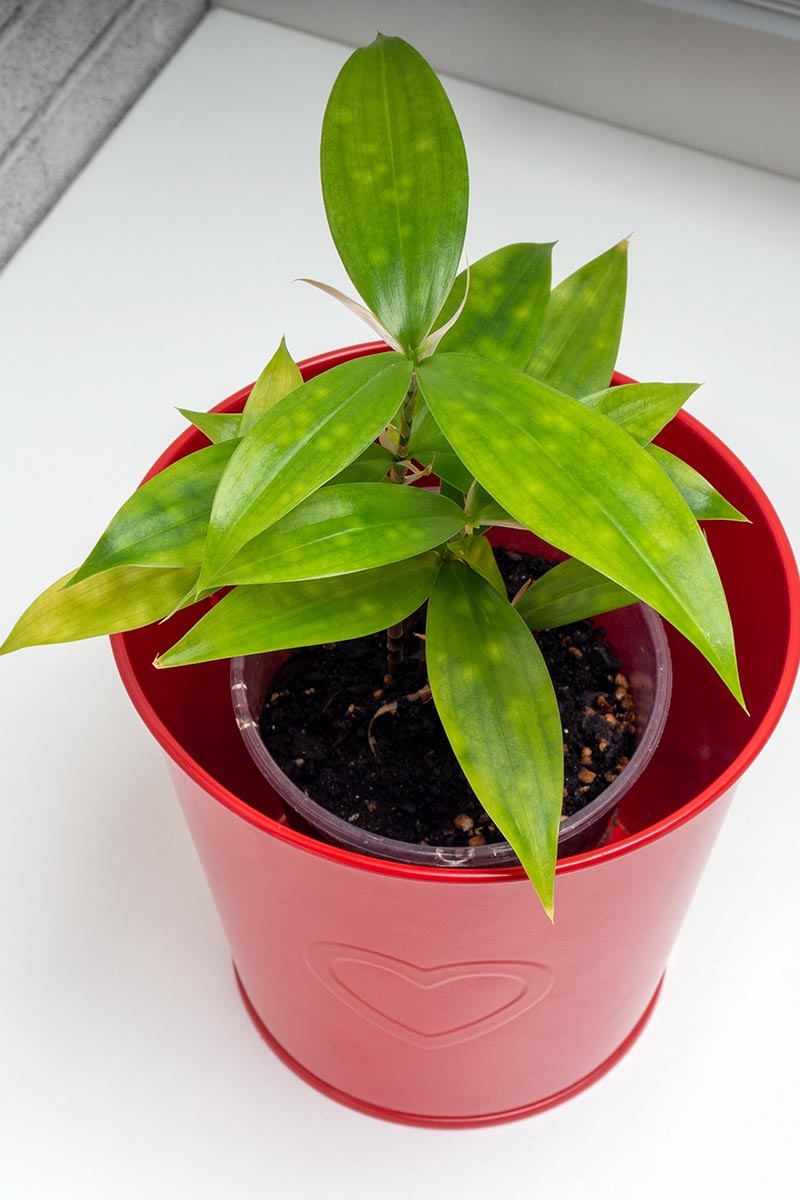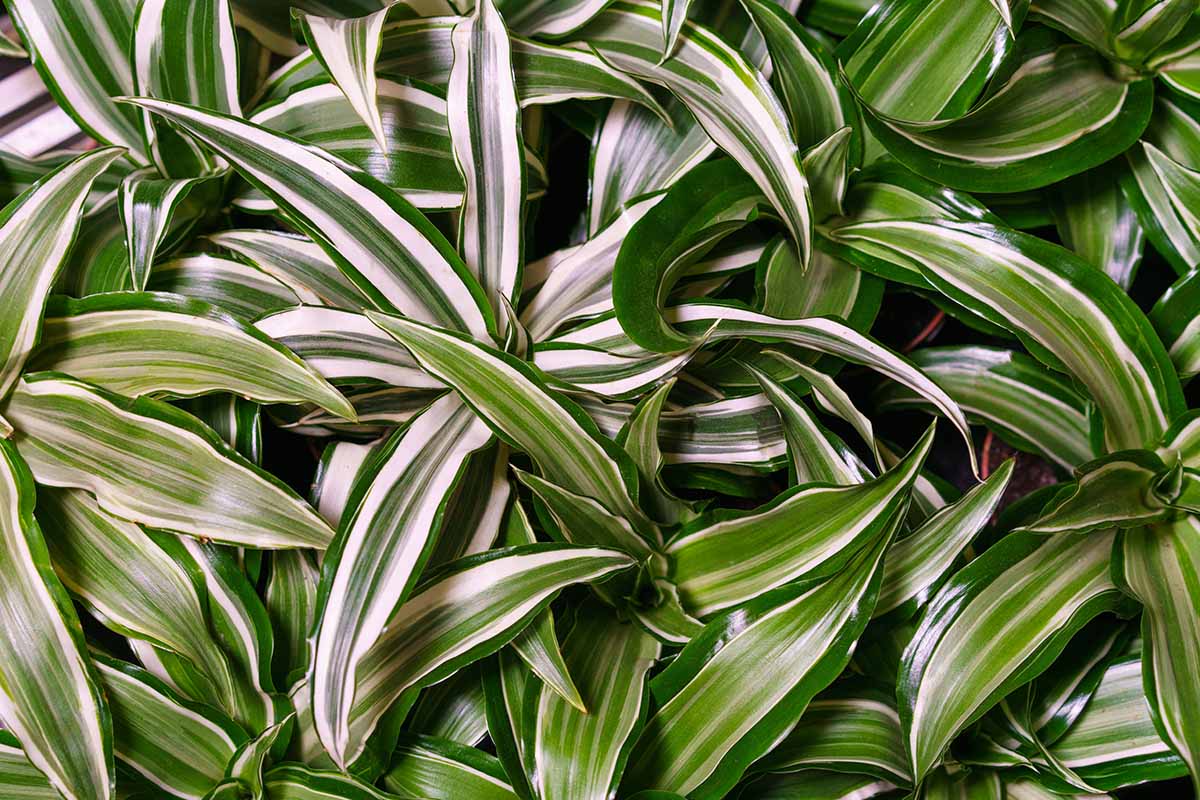Well, probably not, but you get my point. What eventually turned me towards appreciating dracaena was the delightful discovery of the many species that were available. After all, variety is the spice of life, right? We link to vendors to help you find relevant products. If you buy from one of our links, we may earn a commission. A few Dracaena species are not demanding in their care requirements, and in addition to their lovely looks, that’s what makes them so appealing. These are the options you will commonly find in big box stores and garden centers, such as D. reflexa and D. draco. Others are more particular in their care requirements, and typically more difficult to find as well. And some go by multiple names – more on that in a little bit. In general, you can provide dracaena with bright, indirect light or light shade and ensure the soil in the pot never completely dries out. I like to let the top of the soil just start to grow dry to the touch before watering again. Some species may need to have their leaves misted for added humidity, or they may demand more or less light to keep them looking their best. Note that there’s another common houseplant that you may think is missing from this list, and it’s been through a bit of an identity crisis over the years, at least as far as taxonomy goes. I’ve always known this plant as a Princess Ti, but you might know it as Cordyline terminalis. It’s not actually a dracaena, but is commonly identified as one. This is very similar to how American “cedars” aren’t true cedars at all, but are still known as cedars in common parlance. A gorgeous and striking plant, with an intense and rich pink-and-purple coloration on the leaves, it has been referred to and reclassified over the years by various botanists as Convallaria fruticosa, Asparagus terminalis, Dracaena terminalis, and Terminalis fruticosa as well. Today, the horticultural experts seem to have settled on Cordyline fruticosa though you’ll still see many of these other names, as well as various additional common names. I’ve never had luck with these in my home, but you’re supposed to allow the soil to juuust start to dry out before watering again. I don’t pay the closest attention to my houseplants, to be honest, so I’ve never found the right way to grow these particular beauties. Ready to dig in? Let’s explore the various types of dracaena that you may want to grow at home.
1. Draco
Named draco, for dragon, the dragon tree exudes red resin if pruned or wounded. If you’re familiar with “dragon’s blood” incense, now you know why. It was used in olden times to make dye as well. Maxing out at a height of about four feet, D. draco is a stripped-down version of D. marginata. Its leaves tend to be a haggard green lined in a bruised red color. Very similar to D. marginata, except for the color of its leaves, it’s exceptionally hardy and is one of those houseplants that will offer a shrug if you forget to water it for a week. I like this species very much because of its utilitarian and stripped-down appearance. Stoic and hardy – always an excellent combination. The wife and I forgot to water ours for over a month, but neither of us had any idea because it looked so happy in its corner. Expect this plant to reach a maximum height of about four feet. If you’re gardening in California, you can add one to your collection by placing an order with Plants Express. Dracaena draco These are available in five-gallon or 15-gallon containers, and they do well outdoors in Zones 9 to 12. Outdoors, they’ll even produce greenish-white flowers, with orange berries to follow. Cultivated varieties don’t seem to be available commercially, so you’ll need to stick with the species plant for this one, at least for now.
2. Fragrans
Commonly called the corn plant, striped, or cornstalk dracaena, and formerly classified as D. deremensis, D. fragrans is spectacularly hardy if grown in the right conditions. Make sure it isn’t placed in too much shade or low light indoors, and most everything else can be forgiven. As for its appearance, I think this one looks like it’s an artificial houseplant, every time. I’ve never seen one and not touched its leaves to see if it’s the real thing. That’s because it often looks very much like a miniature palm tree, with a woody brown trunk and a spiky tuft of leaves at the top. ‘Limelight’ is another good option and one that I’ve come to appreciate. Its leaves start out yellow-green but mature to something shy of a lime green. Keep its leaves misted for optimum health, using a mister bottle like this one, available from Terrain. Haws Plant Mister The straight species isn’t particularly attractive in comparison to some varieties, but I think that’s nice and appealing in its own way. The ‘Janet Craig’ cultivar “features” dark green leaves that typically reach about nine inches in length. This is my favorite type of D. fragrans, if only because I like ‘em plain. ‘Janet Craig’ You can get your own plant in a white six-inch pot from the Home Depot if you’re a fan of ‘Janet Craig,’ too. If you like some more flash in your dracaena, ‘Warneckii’ has a nice variegated look to its leaves, with creamy white and emerald green stripes. Speaking of which, if you’d like to discover even more specific cultivars of dracaena that come highly recommended, check out our roundup! (coming soon!)
3. Marginata
An especially popular houseplant variety that’s native to Madagascar, this type is often described as D. marginata. But the correct terminology for this one that’s accepted currently by botanists is D. reflexa var. angustifolia, to indicate that it’s a variety of the reflexa species that was found in nature, not its own separate species. We’re going to cut you a break here and include it as its own species, for simplicity’s sake. This is how most plant labels, garden centers, and horticultural resources refer to the plant. My personal favorite, D. marginata features long and slender leaves, sometimes reaching lengths of 18 inches or more! What’s most interesting about this variety is how it grows into a slender and snaking form as it ages, usually with a bare trunk and a splash of colorful leaves at the top. It’s not typically found in its natural form because, well, it’s kind of ugly in its natural form. It has a few scattered leaves per plant with no real order or organization to them, and at its healthiest, it looks a little out of sorts. The leaves are multicolored, with a mix of red, green, and yellow stripes stretching the length of each leaf. The ‘Bicolor’ cultivar is green and ivory with a bit of red in the mix, while ‘Tricolor’ has a much more pronounced red edge to the leaves. This is a variety that’s very easy to take care of, so naturally, it’s one of my favorites. Hey, I’m not lazy. I just like plants that can take care of themselves! Dragon Blood Tree Want to add one to your household? Potted dragon blood trees with braided trunks are available from Fast-Growing Trees. D. marginata Not a fan of the braid? You can also find standard marginata plants in 8.75-inch nursery pots from Costa Farms, available from Home Depot.
4. Reflexa
Spiraling, sword-shaped leaves that are striped yellow and green? Yes, please. In time, your D. reflexa could reach a height of up to eight feet, but most specimens grown in the home max out at about four feet in height. The leaves are short, but that’s alright. It’s a really exceptional-looking species. Sometimes called song of India or song of Jamaica, you may also see these monikers listed as cultivar names. D. reflexa Snag a song of India plant of your very own, available in a four-inch nursery pot from Home Depot.
5. Sanderiana
A funky dracaena species, D. sanderiana is more commonly known as lucky bamboo. But boy, it will grab your attention if it’s been cultivated and carefully pruned and tended for display indoors. It’s not often you find a plant that looks so stripped-down and simple, and that gets lots of bonus points in my book. You can grow D. sanderiana in water (and it’s often sold this way under its lucky bamboo nickname), or you can grow it in soil like your average houseplant. See our guide to growing lucky bamboo to learn more.
6. Surculosa
The “odd man out,” D. surculosa is a low, shrubby species. Its leaves are unlike those of any other type of dracaena, small and shaped like pointed ovals. They’ve got a dark green background with a starspray of yellow dots across the surface of each leaf. Another species that has been described over the years under various botanical names, you may also see it referred to as D. godseffiana, Pleomele godseffiana, Agave godseffiana, or Nemampsis ternifolia, as well as gold-dust or spotted dracaena. Two known varieties are accepted – maculata and surculosa – and several cultivars are available to home gardeners today as well. While it can grow quite tall in its native environment, this species rarely grows over 12 inches in height as an indoor plant. It looks very similar to polka dot plants (Hypoestes phyllostachya), and they make a delightful pair in the home. Allow its soil to dry out a bit between waterings, more than you would with other Dracaena species.
7. Trifasciata
Recently reclassified (here we go again…) as members of the Dracaena genus, you’re probably more familiar with these as snake plants, or mother-in-law’s tongue. Different in terms of appearance to most of the others on this list, these have thick, sturdy, upright leaves that can rise several feet from their pots, with no trunks or stems. But the foliage is still long and strappy, striped, and green. Straps of dark green or light and dark green stripes, sometimes with an added yellow or greenish-yellow stripe for good measure, serve up an appealing addition to home interiors on a side table or in a pot on the floor. They only require infrequent watering, and this is another one that you can pretty much leave alone to do its thing. Read more about growing snake plants in our guide. Have any questions or comments to share? Is there one that you’re already growing at home that we missed here? Feel free to reach out in the comments below! And as always, thanks for being a part of Gardener’s Path. Maybe you’re new to growing dracaena and would like to learn more? Or perhaps you’re thinking about propagating or training your plant as a bonsai? Check out some of our other guides next:
How to Grow and Care for DracaenaHow to Propagate Dracaena HouseplantsHow to Grow and Train Dracaena Plants as Bonsai
